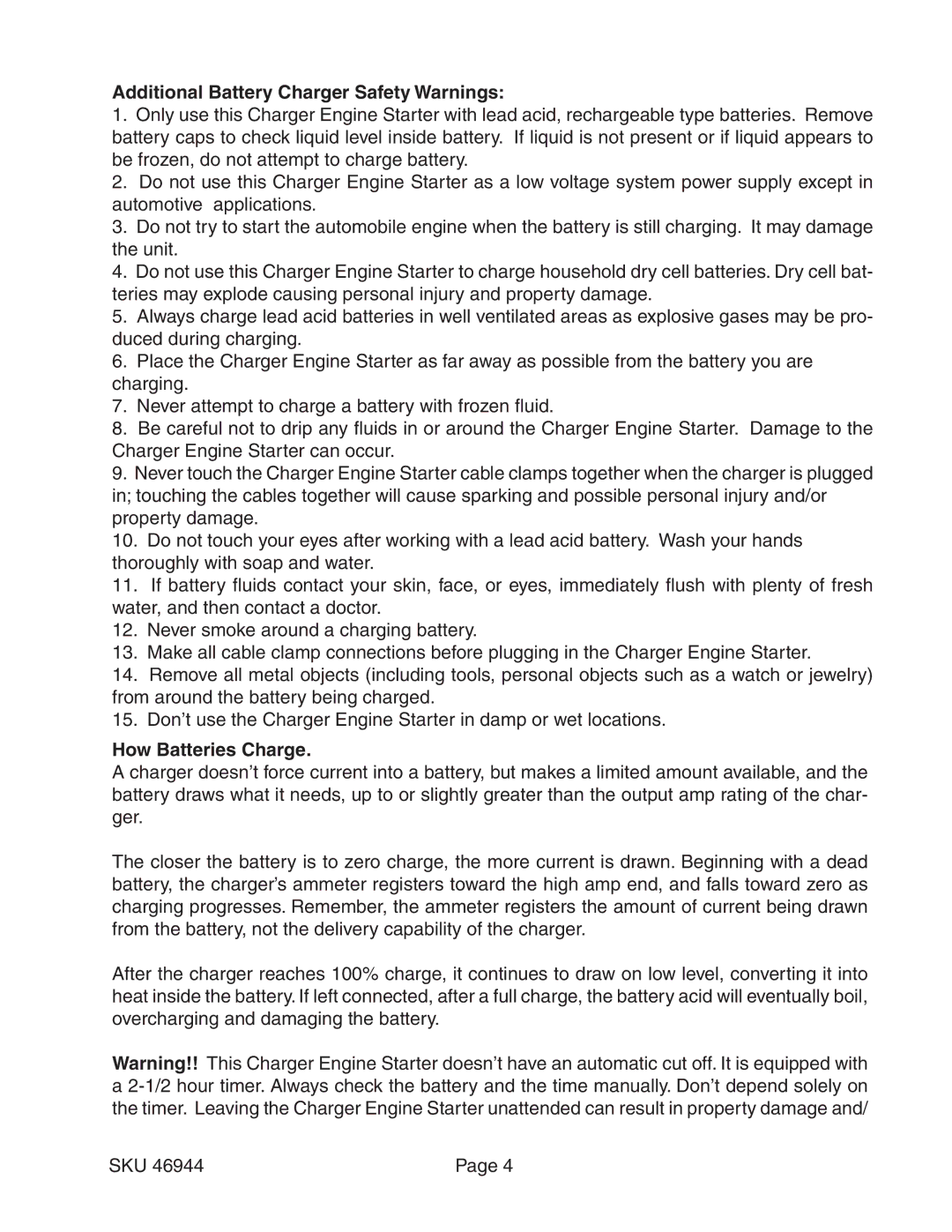46944 specifications
Chicago Electric 46944 is a powerful tool that has garnered attention for its versatile performance and robust features, making it a popular choice among DIY enthusiasts and professionals alike. This electric wood planer is designed to deliver precision and efficiency, ensuring that users can achieve a smooth finish on various woodworking projects.One of the standout characteristics of the Chicago Electric 46944 is its potent 7.5-amp motor, which provides ample power to handle deep cuts and manage even the toughest hardwoods. The motor ensures a consistent performance, allowing users to tackle a wide range of materials without worrying about the tool bogging down. This level of power is particularly advantageous for those working on larger projects, where efficiency is crucial.
The planer features a cutting depth adjustment knob that allows users to easily modify the depth of cut from 0 to 1/16 inch. This adjustable depth is ideal for achieving the perfect finish, whether it’s for fine woodworking or for more substantial work where a thicker cut is necessary. The ability to precisely control the depth of cut enhances the overall user experience, providing versatility in various applications.
Equipped with double-sided blades, the Chicago Electric 46944 enhances its performance and longevity. These blades can be reversed, effectively doubling their lifespan and ensuring that users get the most out of their investment. The tool's design also includes an integrated kickstand, which allows for safe blade changes and prevents the blades from touching surfaces while adjusting, further enhancing safety during use.
Another notable feature of this electric planer is its ergonomic design. The soft-grip handle provides comfort during prolonged use, reducing user fatigue and promoting better control. The balanced weight distribution of the tool adds to this comfort, enabling more extended periods of operation without compromising precision.
Additionally, the integrated dust port is a significant advantage, facilitating improved visibility for users by effectively managing debris. This feature also makes the cleaning process more manageable, helping maintain a tidy workspace.
In conclusion, the Chicago Electric 46944 is a well-designed electric wood planer that combines power, precision, and user-friendly features. Its robust motor, adjustable depth control, double-sided blades, and ergonomic design cater to the needs of various users, from hobbyists to seasoned professionals. With its practical characteristics, this tool stands out in the crowded market of woodworking instruments, making it a reliable choice for anyone seeking to achieve high-quality results in their projects.
